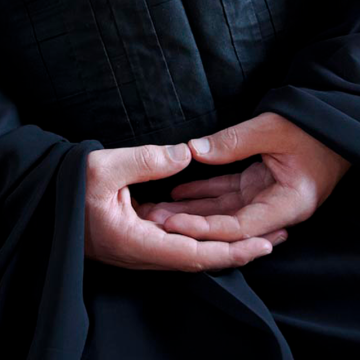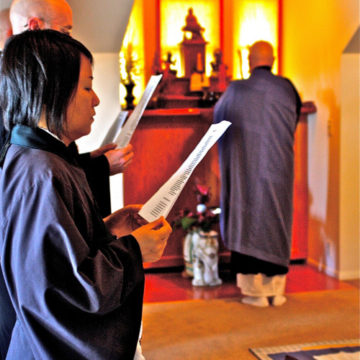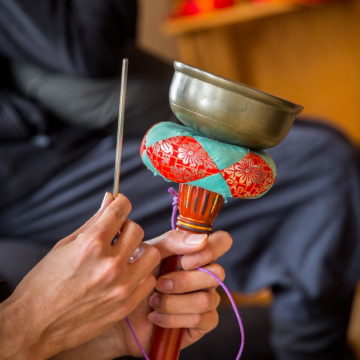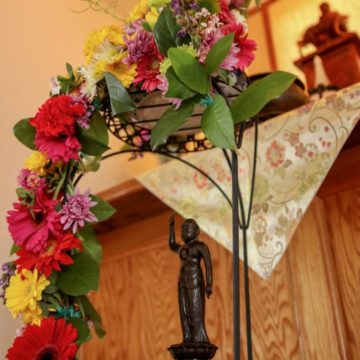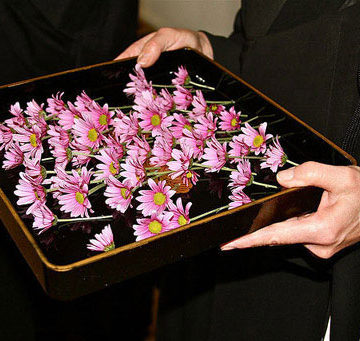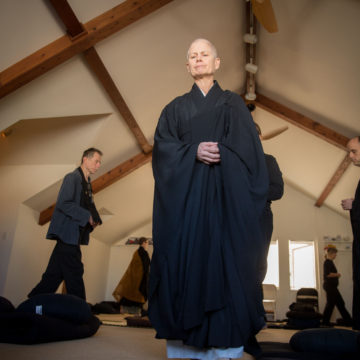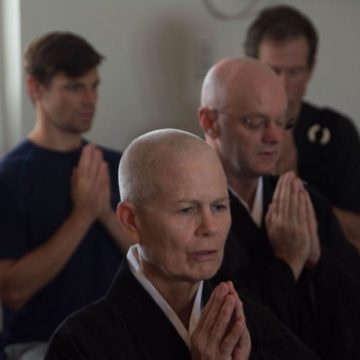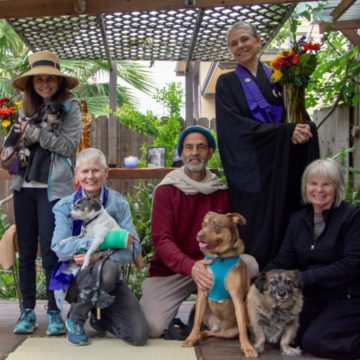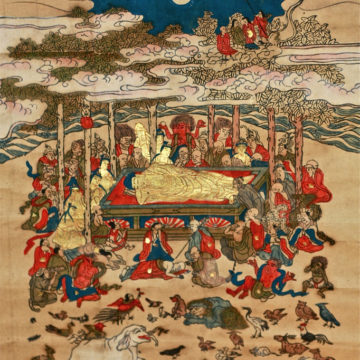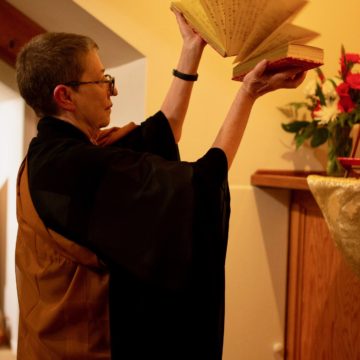At the Hazy Moon, we maintain the form of practice given to us by Maezumi Roshi, which combines aspects of Soto and Rinzai Zen as well as traditional Buddhist observances. One’s personal commitment to practice may be expressed in such milestones as Jukai, or precept-taking; Tokudo, which is ordination as a priest; and Shuso Hossen, the ceremony culminating one’s service as Head Trainee or Head Priest during an Ango training period.
How to Meditate
Learn the basics of Zen meditation in less than five minutes. Clear, step-by-step meditation instruction, as practiced at the Hazy Moon.
Chanting Services
Services introduce the aspect of ritual into our practice. Specifically, a “service” consists of a chant, performed in front of the altar, to transmit the energy, intention and benefit of our practice into the world we inhabit. In one way, rituals are an external expression of our inner state. At the same time, we strengthen and reinforce our inner state by the external chant. The service brings together what we think of as “inside” and “outside” into a unified whole.
The Language of Zen
At the Hazy Moon, we use many Zen terms carried forward from ancient monastic practice. Here is a glossary of words and phrases that you may encounter when you practice in a Zendo. Explanations of other Zen ceremonies and activities are found on our Practice & Traditions page. Buddha – Literally, “awake.” Also refers to […]
How Buddhas Are Born
We observe the traditional Zen ceremony of Hanamatsuri, or flower festival, to commemorate the birth of Shakyamuni Buddha on April 8. Born standing up, he took seven steps, raised his right hand and declared, “Above the heavens, below the earth, I alone am the World Honored One…”
Hanamatsuri
Hanamatsuri is our annual commemoration of Shakyamuni Buddha’s birth. The name literally means festival of the flowers. We mark the occasion by creating an altar of fresh flowers and holding a special service…
Kinhin
Kinhin is walking meditation. At the Hazy Moon, we perform kinhin in between periods of zazen, or seated meditation. Kinhin is a continuation of practice that also refreshes your legs after sitting and gives you an opportunity to exit and re-enter the zendo if needed. A period of kinhin lasts 10 minutes. It begins with […]
Fusatsu (Atonement Ceremony)
Fusatsu is the ceremony of atonement in the Zen tradition. In doing Fusatsu, we acknowledge the suffering caused by our own ignorant view of ourselves as separate from the world we inhabit. In this video, students at the Hazy Moon Zen Center share appreciation for Fusatsu and the role it plays in their practice.
Oryoki: The Practice of Eating Mindfully
Meditation retreats help us learn to approach everyday life in a more mindful way. Oryoki, or mindful eating practice, is one of the most practical elements of a traditional Zen retreat–though for newcomers, the ritual of oryoki can often seem intimidating. In this video, a student at the Hazy Moon Zen Center shares his appreciation for oryoki and its place in the daily flow of events during a retreat.
Ango and Shuso Hossen
The tradition of Ango (which means “peaceful dwelling” in Japanese) began with the original Buddhist sangha that formed around Shakyamuni in the early years of his teaching in northern India.
A Blessing to Frolic Freely
Hazy Moon Priest Laurie Kyoji Anderson’s love of animals and deep respect for ceremony gave birth to our annual Pet Blessing a decade ago. Some Sangha members bring their pets to the outdoor event while others bring photos to place on the altar. By offering chants, incense and flowers, and by reciting the names of our pets, we are acting on their behalf to liberate them from suffering and bring them to great joy.
Parinirvana Day
Parinirvana Day commemorates the death of Shakyamuni Buddha and his entry into Nirvana… With Parinirvana Day, we commemorate the Buddha’s manifestation, give thanks for the teaching that has come to us and express our gratitude for the Dharma.
Revolving the Sutras
To close out the old and ring in the new, the sangha gathered at the culmination of our Year-End Sesshin for the New Year’s Eve ceremony of revolving the sutras, which has been enacted for generations in our lineage. Hosso Roshi officiated at the service, demonstrating the inherent power and benefaction of the eternal now, […]

